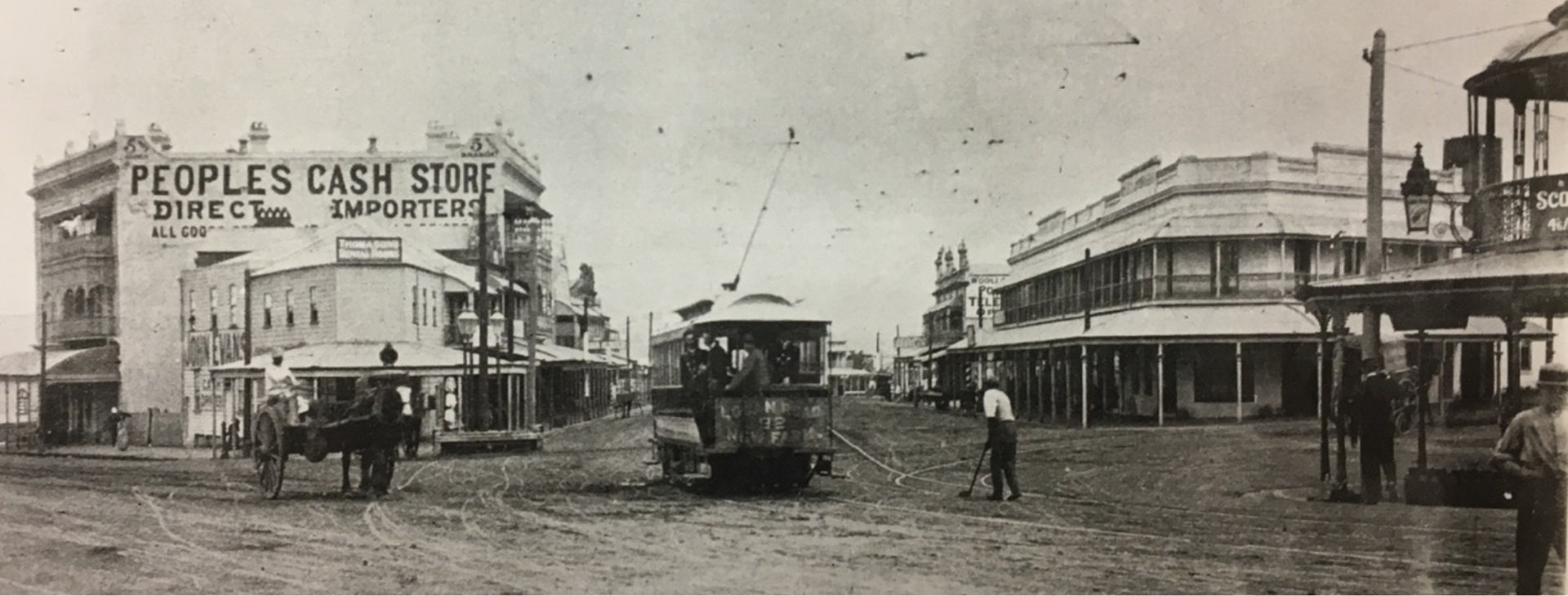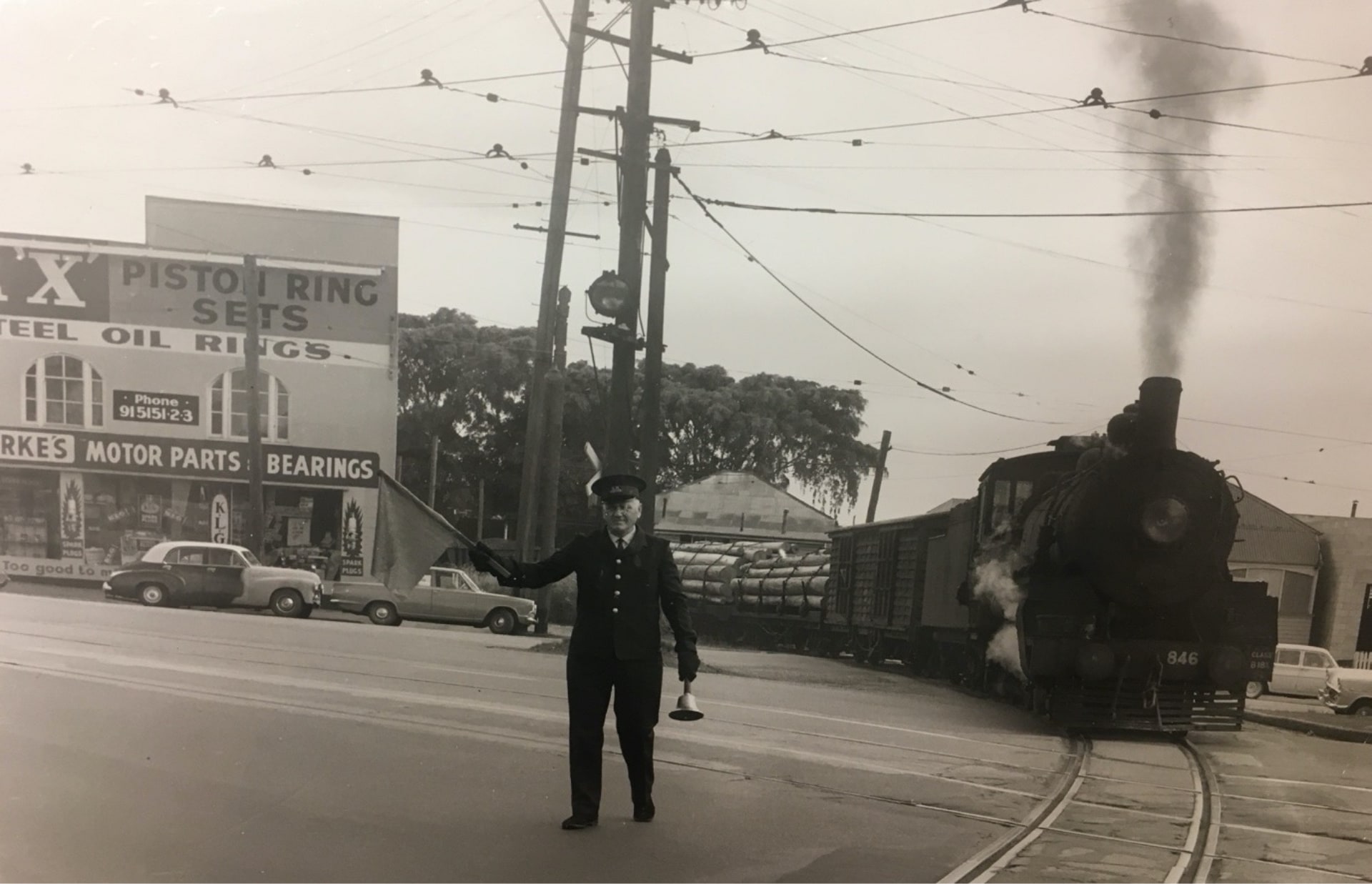Transport

Today’s Cross River Rail project is re-making the face of Woolloongabba. First mooted in the important Wilbur Smith and Associates transport planning study of 1968 on public transport in Brisbane, its construction represents the latest phase in a long sequence of transport developments around the Gabba.
Early roads were important, not just in carrying traffic but in spurring local development. The Gabba Fiveways, where Logan Road started at the junction of Stanley Street and Ipswich Road, was a major local landmark, and shops, hotels and public services clustered there from the 1870s.
Trams across Brisbane tended to follow main arterial road routes, and were key in determining the locations of both shopping strips and new housing developments. Under the Queensland Tramways Act 1882, tram routes were authorised for construction on ordinary city streets. Shortly afterwards, from 1884, the Metropolitan Tramway and Investment Company began horse-drawn tramways through Woolloongabba, linking it to destinations such as central Brisbane via Victoria Bridge, Breakfast Creek and New Farm.
These services were electrified in the mid-1890s, at a time when the impacts of floods and economic recession were being felt and as the Brisbane system was sold to a London-registered enterprise, the Brisbane Tramways Company (BTC). The first electric tram was introduced in June 1897 from Logan Road to Victoria Bridge, and a line in the other direction (linking Woolloongabba to Annerley Junction) followed in 1899. (Sheaffe, 2017: 69)
From that time until their abolition in April 1969, frequent tram services were an everyday feature of life at the busy Fiveways intersection. To begin with, prior to their takeover by the Brisbane City Council in 1925 and the construction of the New Farm Power Station, the tramway system through this area was powered by a small generation station at the Gabba. After that time, the largest tram depot in Brisbane operated at nearby Buranda, alongside Ipswich Road and Cornwall Street. In 1881, plans to build a branch line through to South Brisbane were passed by parliament.
The Gabba’s proximity to the river ensured that mainline rail services
were also established through the busy intersection, but the initial impetus was not for passengers.
The West Moreton coalfield at Ipswich was a major producer of coal, but the upper reaches of the Brisbane and Bremer rivers were narrow and winding. To supply coal for seagoing steamers and coastal ships, a rail route to the lower part of the river was deemed necessary, and was mooted within two decades of Separation through a Royal Commission in the late 1870s.
Construction began soon after, originally proposed to follow Stanley Street to the Dry Dock but then re-routed and requiring a tunnel through the ridgeline overlooking the river to the wharf near the Dry Dock at South Brisbane. This was built in 1882-83 and was open for its first service in June 1884. Thereafter three mixed trains ran daily from South Brisbane Junction (now Corinda) to Stanley Street at Woolloongabba where there was a station, and then on to the railway wharves on the river at River Terrace. Known as the ‘Woolongabba Branch Line’ (mis-spelled by Queensland Railways with only on ‘l’), this mixed coal and freight line was only ever a single track, but was an important connection. It initially carried passengers until that service was discontinued after the opening of the South Brisbane terminus in 1891 (Kerr, 1990: 68, 73).
As a result, the goods yard and locomotive depot near Stanley Street provided the main such facility for Brisbane’s southside rail system through that time. It complicated the traffic at the Fiveways considerably. Railway historian John Kerr described it picturesquely:
Each train or light engine traversing the level crossings at [the Fiveways] was preceded by a flagman, ringing a bell and waving a red flag or, at night, a red light. In later years, the whistling of PB15 locomotives was transmitted to the world by radio whenever Test cricket matches were held at the adjacent ‘Gabba ground (Kerr, 1990:68).


